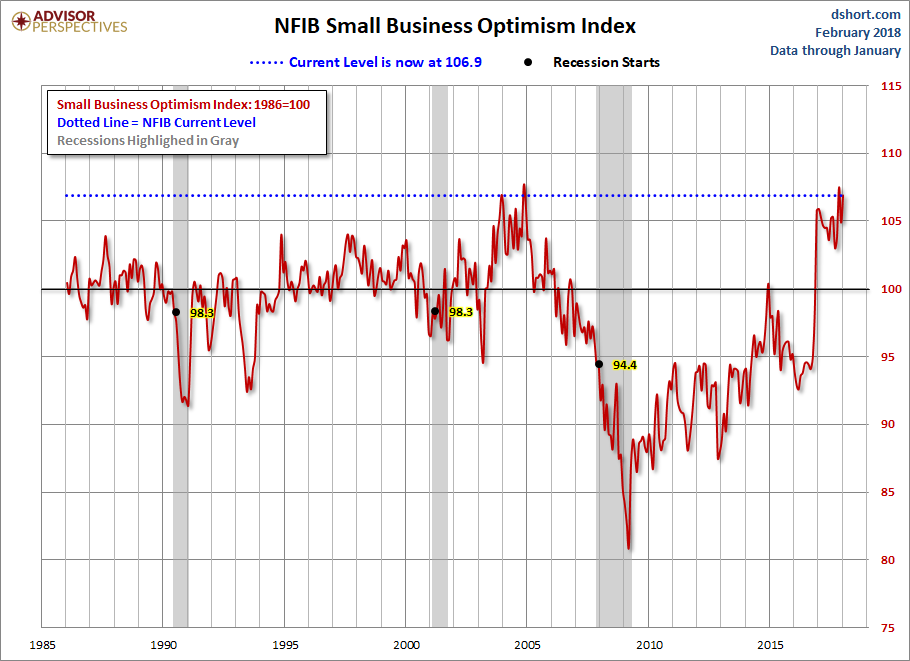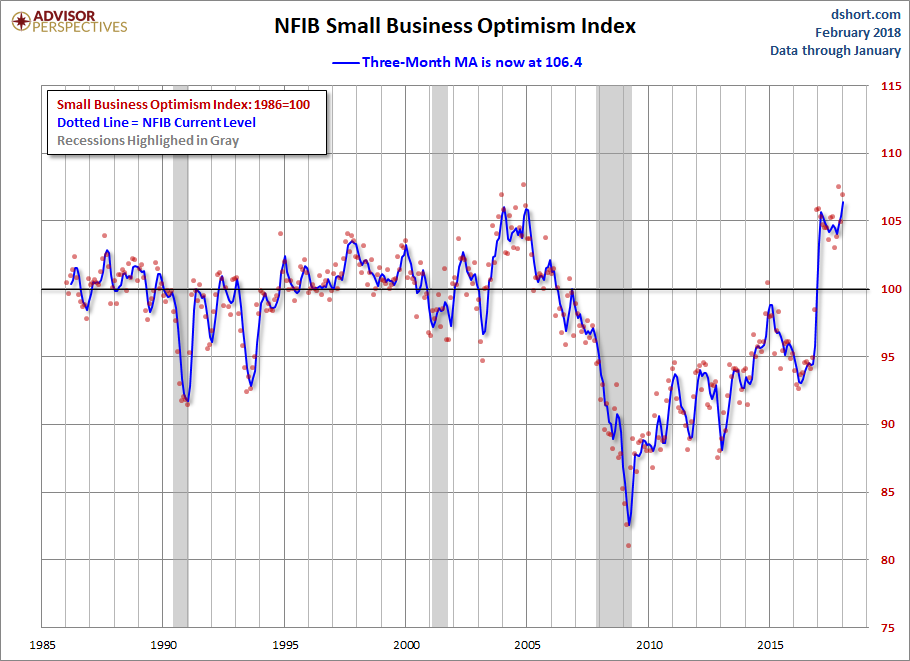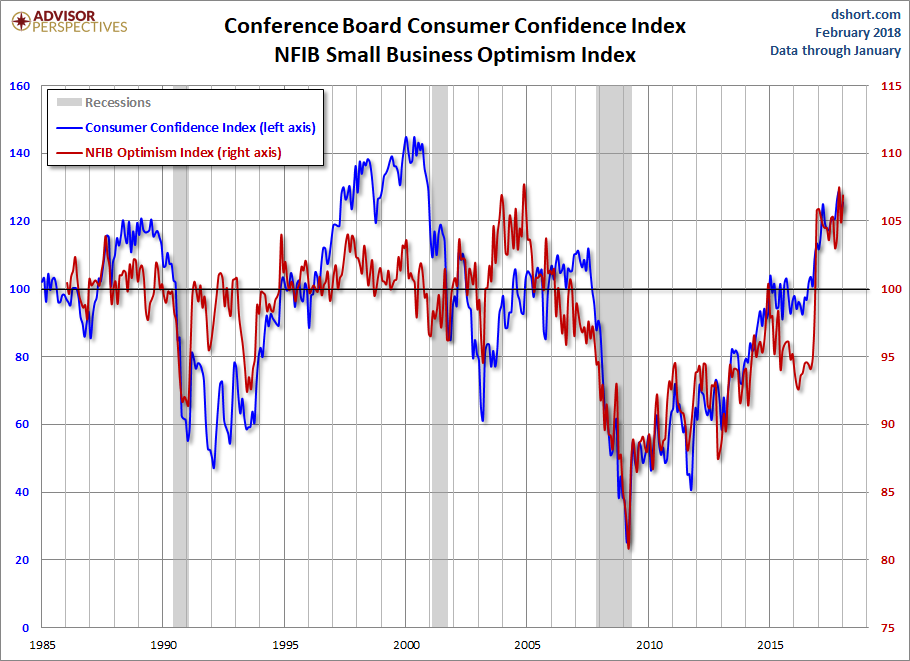NFIB Small Business Survey: "Now Is A Good Time To Expand"
The latest issue of the NFIB Small Business Economic Trends came out this morning. The headline number for January came in at 106.9, up 2.0 from the previous month. The index is at the 99th percentile in this series. Today's number came in above the Investing.com forecast of 106.2.
Here is an excerpt from the opening summary of the news release.
The Small Business Optimism Index jumped two points to 106.9 in January and set a record with the number of small business owners saying Now Is a Good Time to Expand, according to NFIB’s Small Business Economic Trends Survey, released today.
“Main Street is roaring,” said NFIB President and CEO Juanita Duggan. “Small business owners are not only reporting better profits, but they’re also ready to grow and expand. The record level of enthusiasm for expansion follows a year of record-breaking optimism among small businesses.”
The first chart below highlights the 1986 baseline level of 100 and includes some labels to help us visualize that dramatic change in small-business sentiment that accompanied the Great Financial Crisis. Compare, for example, the relative resilience of the index during the 2000-2003 collapse of the Tech Bubble with the far weaker readings following the Great Recession that ended in June 2009.

Here is a closer look at the indicator since the turn of the century. We are just below the post-recession high.

The average monthly change in this indicator is 1.3 points. To smooth out the noise of volatility, here is a 3-month moving average of the Optimism Index along with the monthly values, shown as dots.

Here are some excerpts from the report.
Labor Markets
Job creation was solid in the small-business sector as owners reported a seasonally adjusted average employment change per firm of 0.23 workers, a strong showing.
Inflation
How effective has the Fed's monetary policy been in lifting inflation to it two percent target rate?
The net percent of owners raising average selling prices rose 3 points to a net 11 percent seasonally adjusted, the highest reading since July 2014. Unadjusted, 9 percent of owners reported reducing their average selling prices in the past three months (down 2 points), and 19 percent reported price increases (up 4 points).
Credit Markets
Has the Fed's zero interest rate policy and quantitative easing had a positive impact on Small Businesses?
Three percent of owners reported that all their borrowing needs were not satisfied, unchanged and historically low. Thirty-one percent reported all credit needs met (down 1 point) and 52 percent said they were not interested in a loan, unchanged.
NFIB Commentary
This month's "Commentary" section includes the following observations and opinions:
The NFIB indicators clearly anticipate further upticks in economic growth, perhaps pushing up toward 4 percent for the fourth quarter of 2017. This is a dramatically different picture than owners presented during the 2009-16 recovery under President Obama. The change in the management team in Washington dramatically improved expectations, and that began to translate into increased sales and hiring. Owners did not know exactly what the tax bill would look like, but believed that whatever it looked like, it would be a significant improvement over what was currently in force. That was enough to “bet on”.
Business Optimism and Consumer Confidence
The next chart is an overlay of the Business Optimism Index and the Conference Board Consumer Confidence Index. The consumer measure is the more volatile of the two, so it is plotted on a separate axis to give a better comparison of the two series from the common baseline of 100.

These two measures of mood have been highly correlated since the early days of the Great Recession. The two diverged after their previous interim peaks, but have recently resumed their correlation. A decline in Small Business Sentiment was a long leading indicator for the last two recessions.
Disclosure: None.



